10 Good Luck Plants to Bring Positive Energy and Harmony Into Your Home (Feng Shui Guide)
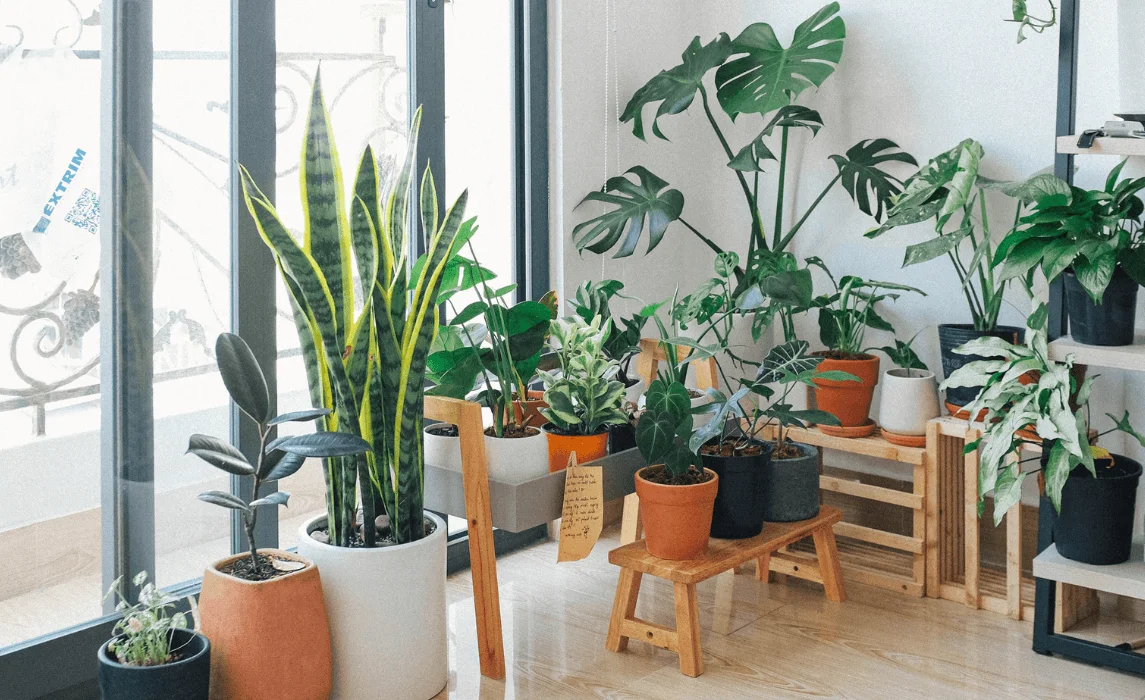
Q1: What are sunflower companion plants?
A: Sunflower companion plants are crops or flowers that grow well alongside sunflowers. They either benefit from the sunflower’s height, attract pollinators, or help repel pests. Examples include cucumbers, beans, marigolds, garlic, and squash. These best companion plants for sunflowers help create a healthier, more balanced vegetable garden.
Q2: Why should I plant sunflowers with companion plants?
A: Companion planting helps sunflowers grow stronger while improving your garden’s ecosystem. Some plants, like beans, fix nitrogen into the soil. Others, like onions and garlic, naturally repel harmful insects. Together, these sunflower companion plants enhance soil health, attract bees, and keep your garden pest-free — without chemicals!
Q3: What plants should I avoid planting with sunflowers?
A: Some plants don’t mix well with sunflowers. Avoid:
- Potatoes – attract the same pests as sunflowers.
- Pole Beans – compete for sunlight and space.
- Fennel and other allelopathic plants – release chemicals that inhibit growth.
- Basil and parsley – struggle with too much heat and shade.
These are plants to avoid because they can harm your sunflower plant’s growth or attract unwanted pests.
Q4: What does “allelopathic” mean in gardening?
A: The term allelopathic refers to plants that release natural chemicals (called allelochemicals) into the soil or air that affect nearby plant growth. For example, fennel and black walnut trees are allelopathic plants — they can stunt the growth of sensitive neighbors like sunflowers or beans. Always research before planting them together.
Q5: Can I plant sunflowers in a vegetable garden?
A: Yes! Sunflowers in vegetable gardens are fantastic companions. They attract pollinators that improve fruit yields for vegetables like tomatoes, cucumbers, squash, and beans. Their tall stalks also act as windbreaks, protecting smaller crops from damage. Just remember to plant sunflowers on the north side so they don’t block sunlight from shorter plants.
Q6: How close should I plant companion plants to sunflowers?
A: It depends on the type of companion plant:
- Small herbs or root crops (carrots, onions, garlic): 6–8 inches away.
- Medium crops (beans, cucumbers): 12–18 inches away.
- Large crops (tomatoes, squash, corn): 2–3 feet away.
This spacing ensures good airflow and prevents allelopathic effects between plants.
Q: What are the most common pests that affect dieffenbachia?
A: Like many tropical houseplants, dumb cane can attract common pests such as spider mites, mealybugs, and scale insects. Regularly inspect leaves and treat infestations with neem oil or insecticidal soap.
Q: How do I fix common problems like yellowing leaves?
A: Yellow leaves usually mean overwatering, while drooping may indicate underwatering. Adjust your watering schedule and check soil moisture to resolve these common problems.
Q: Can I propagate dumb cane easily?
A: Yes! You can propagate dieffenbachia from stem cuttings placed in water or soil. Within weeks, new roots will form, giving you new plants to enjoy.
Q: How often should I repot my dieffenbachia?
A: Most dieffenbachias benefit from a fresh pot every 2–3 years, or sooner if roots start circling. Repotting not only gives them more space but also refreshes soil nutrients.
Q: Why is the Dieffenbachia plant also known as dumb cane?
A: Dieffenbachia is also known as dumb cane because its sap contains calcium oxalate crystals, which can cause temporary swelling and numbness in the mouth if ingested, making it difficult to speak.
Q: Why do the large leaves droop?
A: Drooping leaves may mean your plant is thirsty, overwatered, or suffering from cold drafts. Always check soil moisture first. If the soil is soggy, repot into fresh soil with better drainage.
Q: Can I remove older leaves from my dumb cane?
A: Yes, removing older leaves that are yellow or damaged helps redirect the plant’s energy to new leaves. Always prune with clean scissors and avoid cutting too close to the main stem.
Q: Can dieffenbachia plants grow quite large?
A: Yes, given the right conditions, a dieffenbachia plant may grow quite large—up to 6 feet indoors and even taller in tropical climates. Regular pruning helps control its size and shape.
Q: What are the ideal growing conditions for cauliflower?
A: Cauliflower grows best in cool weather with temperatures between 60–70°F. It prefers a garden bed with fertile, well-drained soil, a pH of 6.0–7.0, and consistent moisture. Because cauliflower is more sensitive than other vegetable plants, it struggles in the heat of summer and thrives in spring and fall.
Q: Is cauliflower difficult to grow compared to other vegetables?
A: Yes, cauliflower is considered one of the more difficult to grow garden vegetables. Unlike broccoli and cauliflower’s other Brassica relatives, cauliflower is more sensitive to temperature swings, soil fertility, and watering. With careful timing and steady care, though, you can get excellent results.
Q: When should I start cauliflower seeds?
A: For a spring harvest, start cauliflower seeds indoors 4–6 weeks before the last expected frost. For a fall harvest, start cauliflower 6–8 weeks before the first fall frost date. Cauliflower is best started indoors as seedlings rather than direct sowing, since it needs steady growth without setbacks.
Q: How big should heads of cauliflower be before harvest?
A: Heads of cauliflower, also called cauliflower curds, are ready to harvest when they grow to 6 to 8 inches in diameter. Some cultivars may reach 8 inches in diameter or more, but it’s best not to wait too long or the curds will loosen and lose flavor.
Q: How many days does it take cauliflower to grow?
A: Depending on the cauliflower cultivars you choose, the time to grow from seed to harvest is usually 55–100 days. Spring-planted cauliflower matures faster, while fall crops may take longer but often produce tighter, better-quality heads.
10 Good Luck Plants to Bring Positive Energy and Harmony Into Your Home
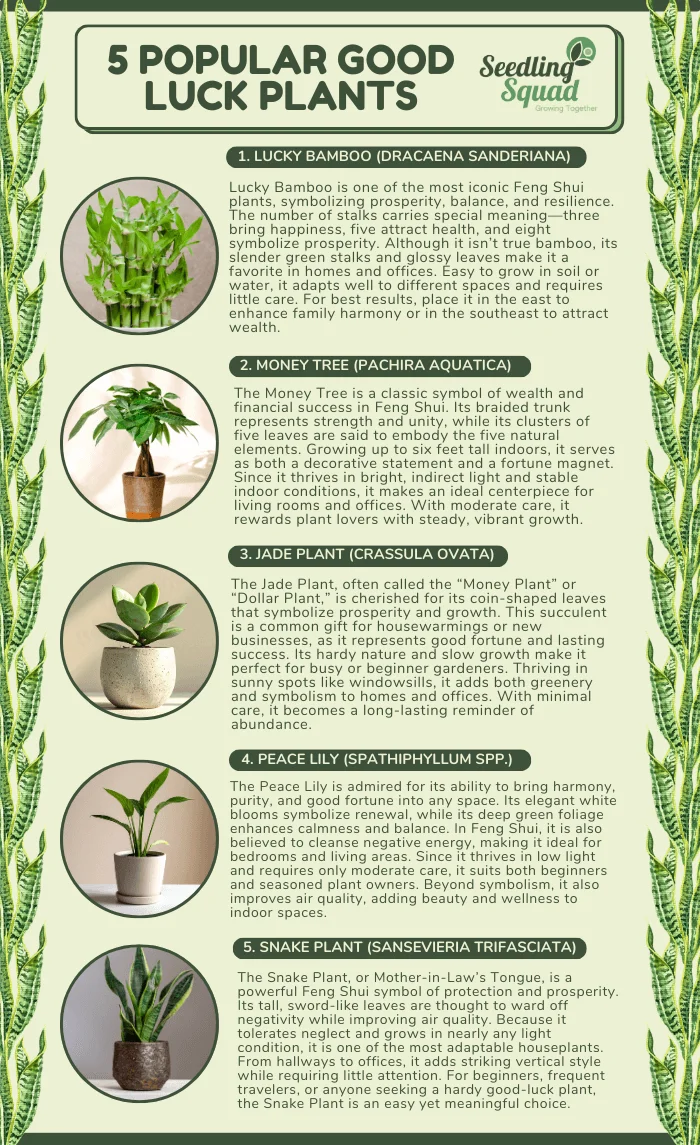
Looking to fill your living space with more than just greenery? In Feng Shui, certain plants are believed to attract good fortune, prosperity, and positive energy while creating a sense of balance and harmony in your home. Beyond their natural beauty, these so-called “good luck plants” symbolize growth, renewal, and abundance, making them powerful additions to any room. Whether you’re hoping to invite wealth with a money tree, strengthen family bonds with a jade plant, or simply create a calming atmosphere, the right plant can help transform your space into a sanctuary of good energy. In this guide, we’ll explore 10 good luck plants and share how to care for them so they thrive while bringing harmony, prosperity, and joy into your home.
10 Plants for Good Luck
1. Lucky Bamboo (Dracaena sanderiana)
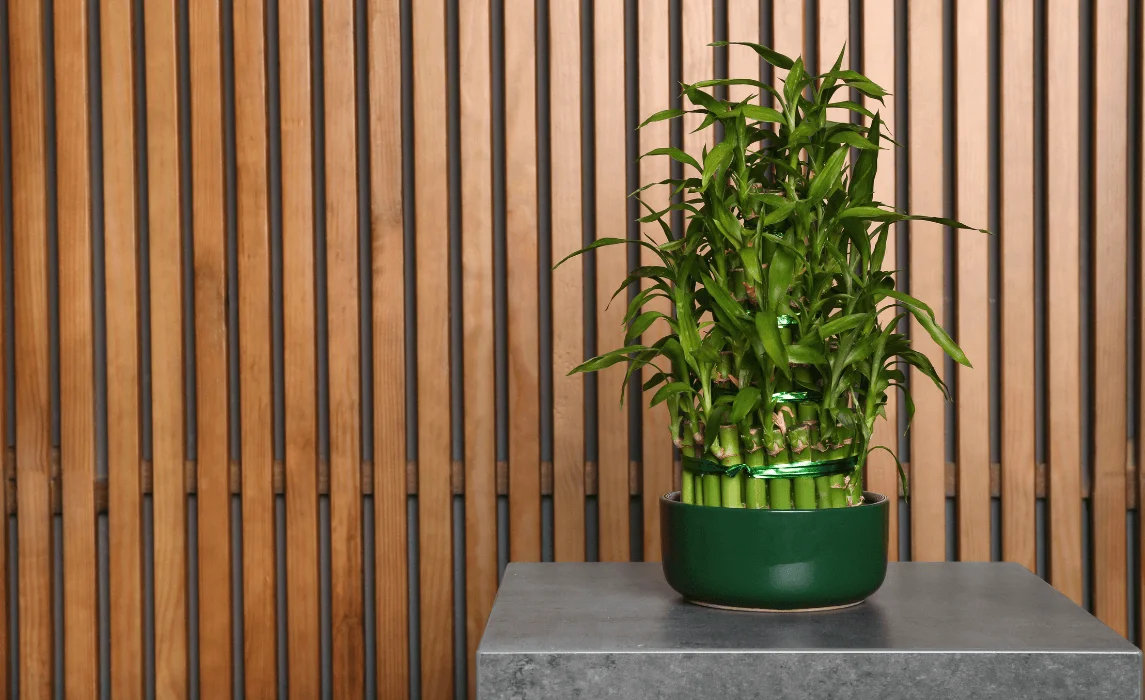
Lucky Bamboo is one of the most iconic good-luck plants, symbolizing prosperity, resilience, and balance in Feng Shui. The number of stalks holds special meaning—three bring happiness, wealth, and longevity, five attract health, and eight symbolize prosperity. Despite its name, it isn’t true bamboo but a Dracaena with slender, green stalks that can be straight or shaped into spirals and braids, topped with glossy green leaves. It thrives indoors, especially in offices and homes, and is often placed in the east for family harmony or southeast for wealth. It can grow in soil or water, making it adaptable and easy to care for. Regular water changes, indirect light, and mild fertilization keep it healthy. This plant is perfect for beginners or busy individuals who want a low-maintenance plant that also adds charm and positive energy.
Soil: Well-draining potting mix or water with pebbles
Water: Weekly refresh if in water; keep soil moist
Light: Bright, indirect light
Humidity: Average indoor humidity
Fertilizer: Mild liquid feed every 6–8 weeks
Temperature: 65–90°F (18–32°C)
USDA Zone: 10–11
2. Money Tree (Pachira aquatica)
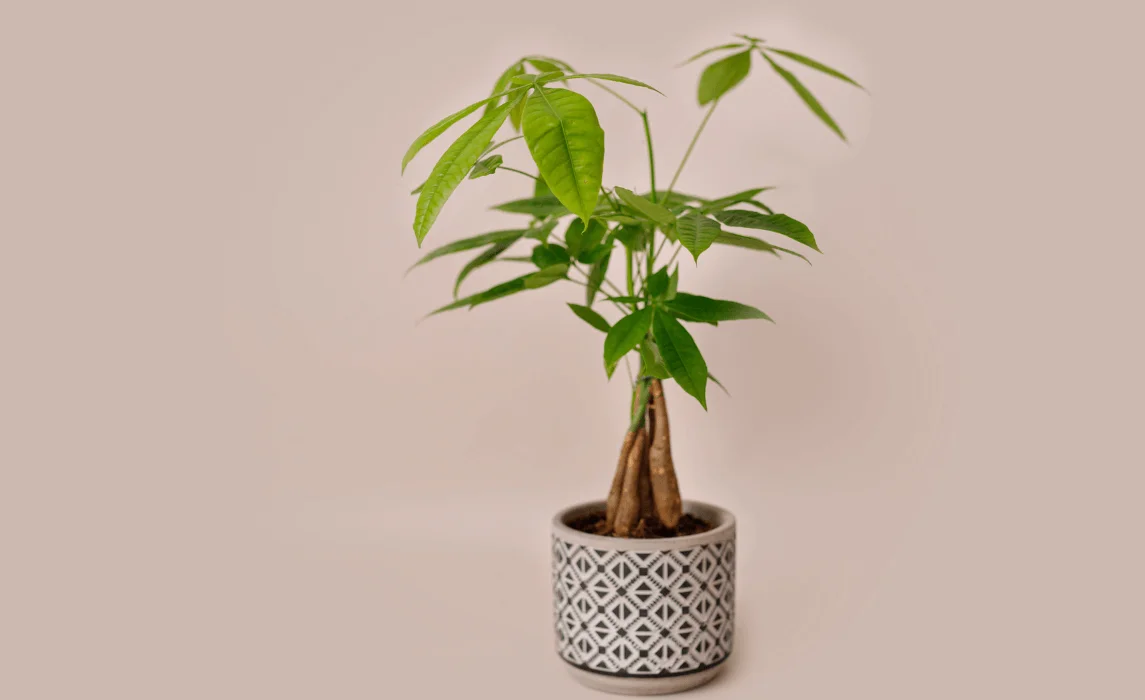
The Money Tree is a popular Feng Shui plant believed to attract wealth and financial success, especially when placed in living rooms or offices. Its braided trunk symbolizes interconnectedness and strength, while its glossy green leaves—often growing in clusters of five—are thought to represent the five natural elements. This tropical tree can grow up to six feet indoors, making it both a decorative statement and a fortune magnet. It thrives in bright, indirect light and prefers a stable indoor environment with moderate humidity. To keep it healthy, allow the soil to dry slightly between waterings to avoid root rot. Fertilize monthly during the growing season for vibrant growth. It’s perfect for intermediate gardeners who enjoy larger indoor plants and want a symbolic centerpiece that radiates positive energy while being relatively easy to maintain.
Soil: Well-draining, peat-based mix
Water: Every 1–2 weeks; avoid soggy soil
Light: Bright, indirect light
Humidity: Moderate
Fertilizer: Monthly during spring and summer
Temperature: 60–75°F (15–24°C)
USDA Zone: 10–12
3. Jade Plant (Crassula ovata)
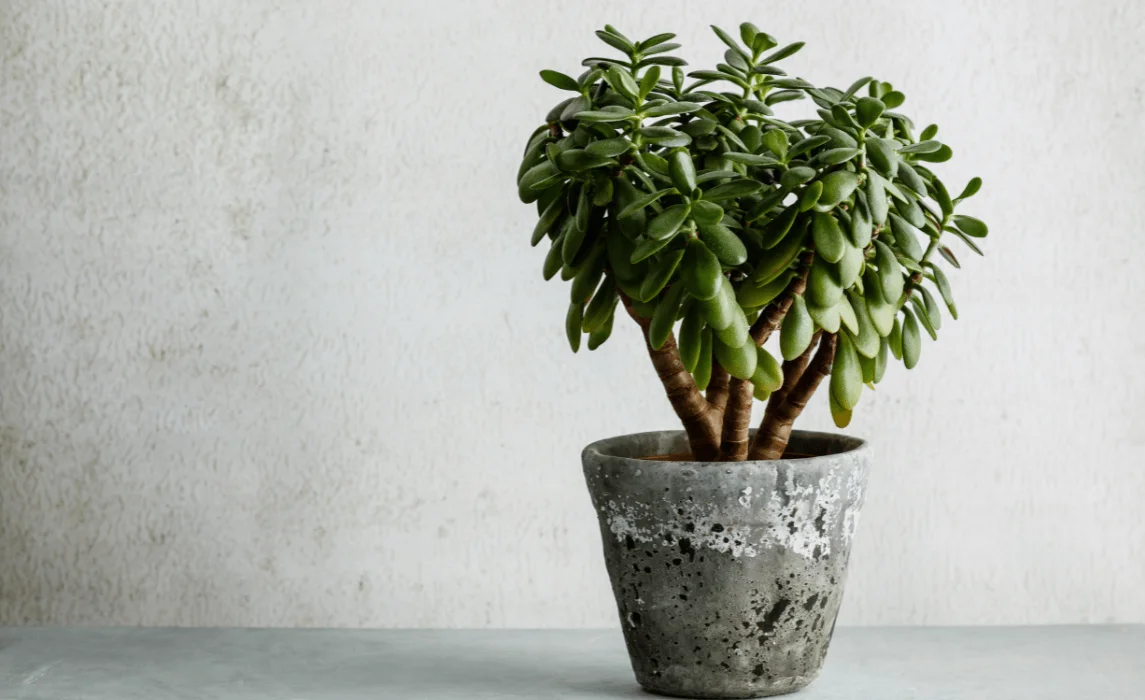
The Jade Plant, also known as the “Money Plant” or “Dollar Plant,” is a succulent that has long been associated with prosperity and wealth, making it a common housewarming or business-opening gift. With its thick, round, coin-shaped leaves that gleam a deep green, sometimes tinged with red edges, it perfectly symbolizes financial luck and growth. This hardy succulent can reach up to three feet tall and thrives on windowsills or sunny spots, especially in offices or living rooms where natural light is abundant. It thrives in dry conditions and needs minimal care—just water sparingly when the soil dries out completely, as overwatering can harm it. Its slow growth and resilience make it an excellent plant for beginner gardeners or those who prefer low-maintenance indoor greenery. For many, the Jade Plant is both a lucky charm and a beautiful, enduring companion.
Soil: Cactus or succulent mix
Water: Every 2–3 weeks; let soil dry out
Light: Bright, direct sunlight
Humidity: Low to average
Fertilizer: Twice yearly with succulent fertilizer
Temperature: 55–75°F (13–24°C)
USDA Zone: 10–11
4. Peace Lily (Spathiphyllum spp.)
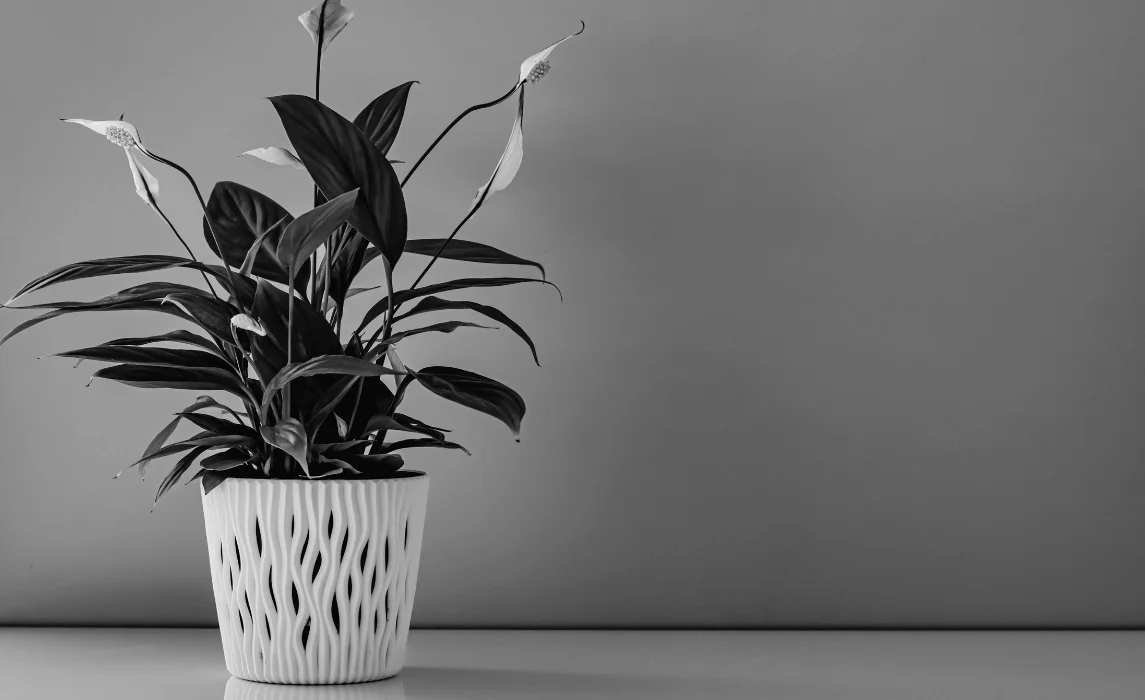
Peace Lilies are elegant indoor plants associated with harmony, peace, and good fortune. In Feng Shui, they are believed to cleanse negative energy and promote spiritual well-being, making them ideal for bedrooms and living spaces. Their striking white blooms, shaped like teardrops, stand gracefully against deep green foliage, symbolizing purity and renewal. These compact yet lush plants thrive in shaded indoor environments, perfect for low-light apartments or offices. They prefer consistently moist soil but should not be waterlogged. Wiping the leaves occasionally helps them breathe and prevents dust buildup. Peace Lilies are forgiving plants, ideal for beginners or those with limited natural light at home. Their air-purifying qualities, beauty, and symbolism make them one of the most recommended good-luck plants for improving both energy flow and interior aesthetics.
Soil: Well-draining, rich potting mix
Water: Keep soil evenly moist
Light: Low to medium, indirect light
Humidity: Moderate to high
Fertilizer: Every 6–8 weeks in spring/summer
Temperature: 65–80°F (18–27°C)
USDA Zone: 10–11
5. Snake Plant (Sansevieria trifasciata)
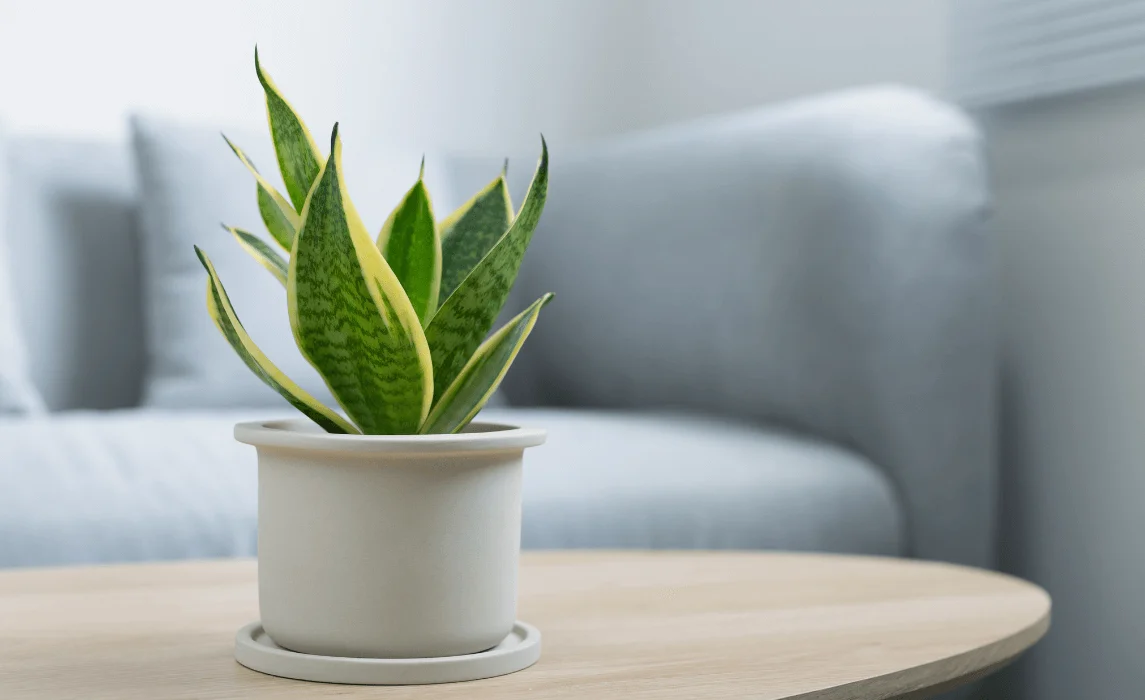
The Snake Plant, also known as Mother-in-Law’s Tongue, is a symbol of protection and good fortune, especially in Feng Shui, where it’s said to ward off negative energies and improve indoor air quality. With its tall, sword-like leaves that are stiff, upright, and variegated in green, yellow, or silver patterns, it adds striking vertical interest to interiors. Snake Plants thrive almost anywhere, from dimly lit corners to sunny windows, making them one of the most adaptable houseplants. They store water in their leaves, so they require minimal watering and tolerate neglect well. This durability makes them perfect for busy individuals, travelers, or new plant parents who want greenery without high maintenance. Compact or tall varieties fit perfectly in offices, hallways, or living rooms, where they provide both style and symbolic protection.
Soil: Sandy, well-draining mix
Water: Every 2–3 weeks; let soil dry
Light: Low to bright, indirect light
Humidity: Low to average
Fertilizer: Light feed once per season
Temperature: 55–85°F (13–29°C)
USDA Zone: 9–11
6. Orchids (Orchidaceae family)
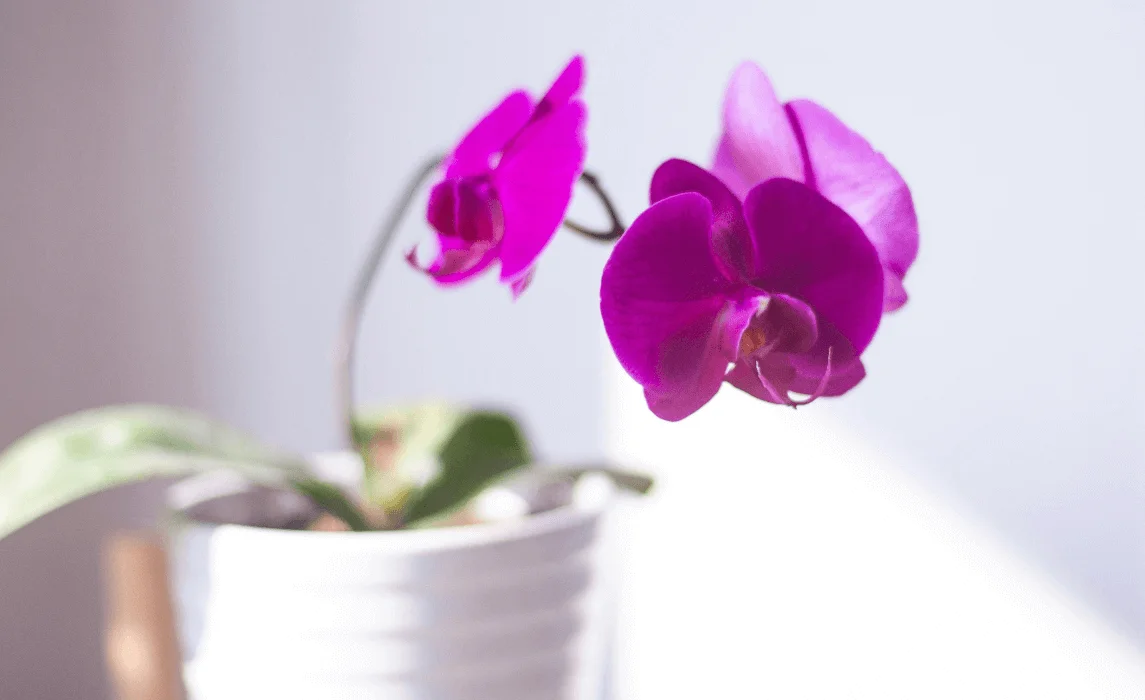
Orchids have long been associated with love, fertility, and prosperity, often given as gifts for weddings or new beginnings. In Feng Shui, they represent beauty, refinement, and positive relationships. Their graceful, arching stems adorned with delicate blooms in white, purple, pink, or yellow create an elegant and luxurious display. Orchids thrive best in bright, indirect light and prefer humid environments, making them perfect for bathrooms, kitchens, or sunny living rooms. They grow in orchid-specific bark-based media rather than soil, which allows their roots to breathe. Watering once a week and providing proper drainage are key to keeping them healthy. Though they require slightly more attention than other plants, they reward their caretakers with stunning flowers that can last for weeks. Orchids suit intermediate gardeners who enjoy tending to detail and appreciate plants that bring both luck and elegance to their homes.
Soil: Orchid bark mix
Water: Once a week; avoid standing water
Light: Bright, indirect light
Humidity: Moderate to high
Fertilizer: Every 2 weeks during growth
Temperature: 60–80°F (16–27°C)
USDA Zone: 10–12
7. Rubber Plant (Ficus elastica)
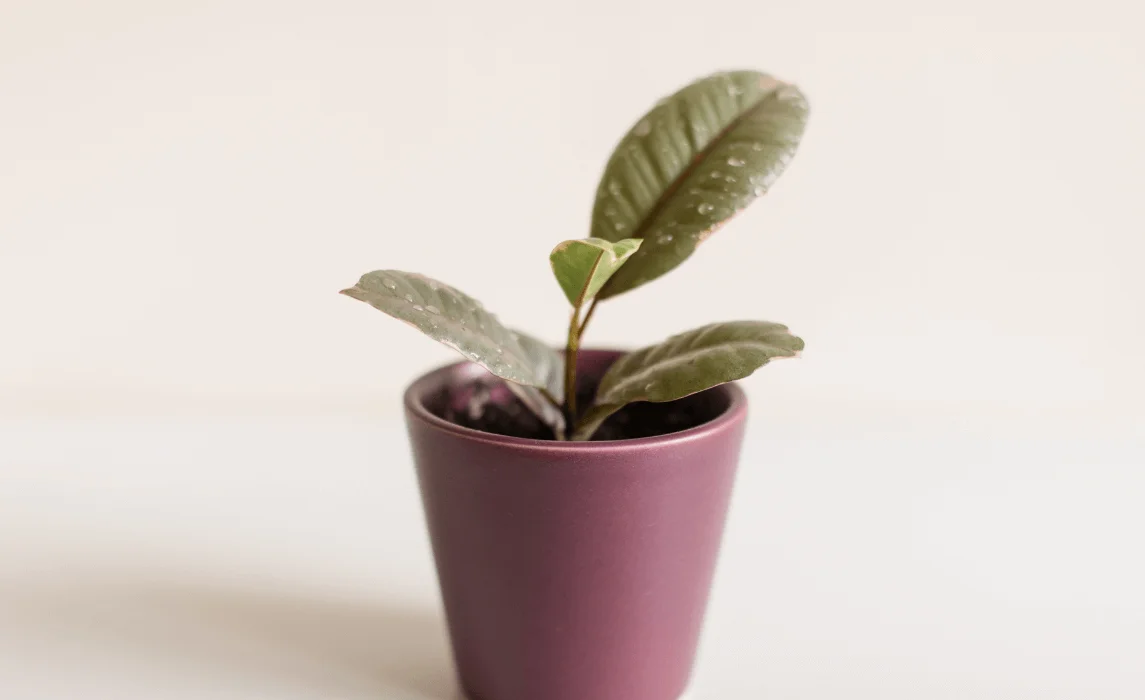
The Rubber Plant is a bold, luck-bringing plant often linked with abundance and wealth. Its large, glossy, oval leaves in deep green or burgundy symbolize vitality and continuous growth, making it popular in Feng Shui for attracting prosperity when placed in living rooms or offices. Indoors, it can grow to impressive heights of six to ten feet, serving as a striking decorative centerpiece. Rubber Plants thrive in bright, indirect light but can also tolerate moderate shade. They prefer their soil to dry slightly between waterings and benefit from occasional leaf wiping to maintain their sheen. Fertilizing monthly during the growing season encourages lush growth. Because of their larger size, Rubber Plants are recommended for intermediate gardeners or plant lovers with spacious rooms who want a statement plant that also doubles as a symbol of good fortune.
Soil: Well-draining, loamy mix
Water: Every 1–2 weeks; let topsoil dry
Light: Bright, indirect light
Humidity: Average indoor humidity
Fertilizer: Monthly in spring and summer
Temperature: 60–75°F (15–24°C)
USDA Zone: 10–12
8. Basil (Ocimum basilicum)
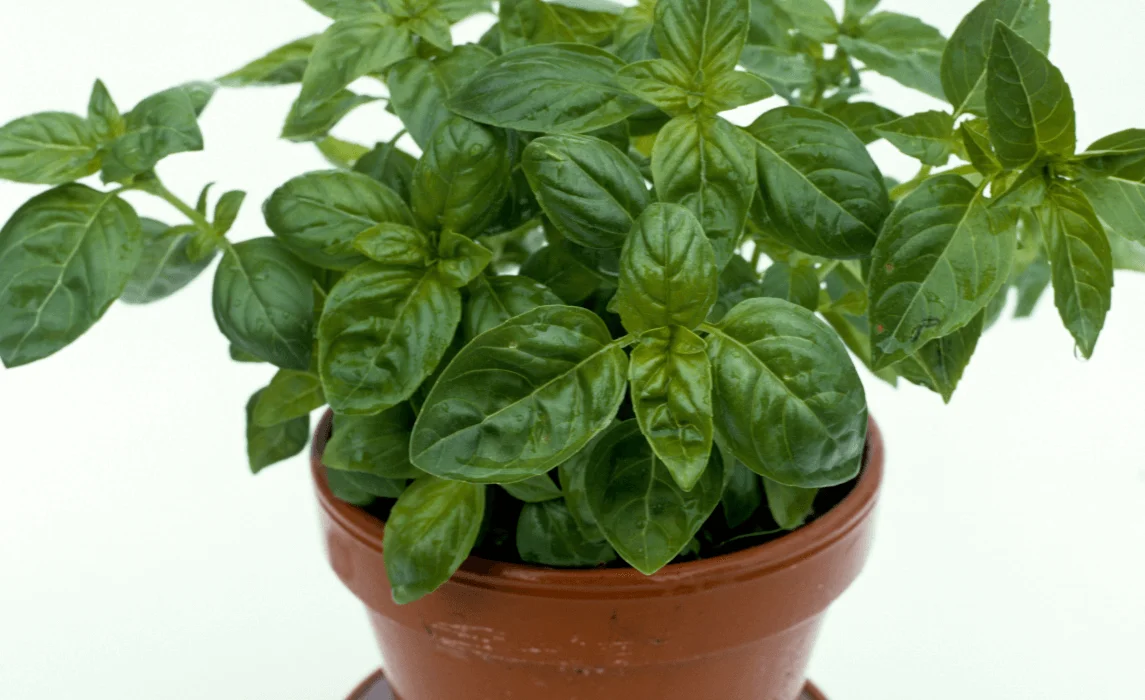
Basil is more than just a culinary herb—it has deep symbolic meaning in many cultures, representing luck, protection, and prosperity. In some traditions, it’s believed to attract love and ward off negative energy, making it a powerful good-luck plant to keep at home. Basil grows into a small, bushy herb with bright green, aromatic leaves that release a refreshing fragrance when touched. It thrives in sunny kitchens, gardens, or patios where it can receive at least six hours of sunlight daily. Regular watering and well-drained soil are essential for its lush growth. Basil is best suited for gardeners who enjoy combining practical use with symbolism, as it offers both flavor for the kitchen and spiritual benefits. It’s perfect for home cooks, beginners, or anyone who wants an accessible plant that brings freshness and good luck.
Soil: Well-draining, nutrient-rich mix
Water: Regularly; keep soil slightly moist
Light: Full sun (6+ hours)
Humidity: Average to moderate
Fertilizer: Every 4–6 weeks during growth
Temperature: 65–85°F (18–29°C)
USDA Zone: 10–11
9. Chrysanthemum (Chrysanthemum spp.)
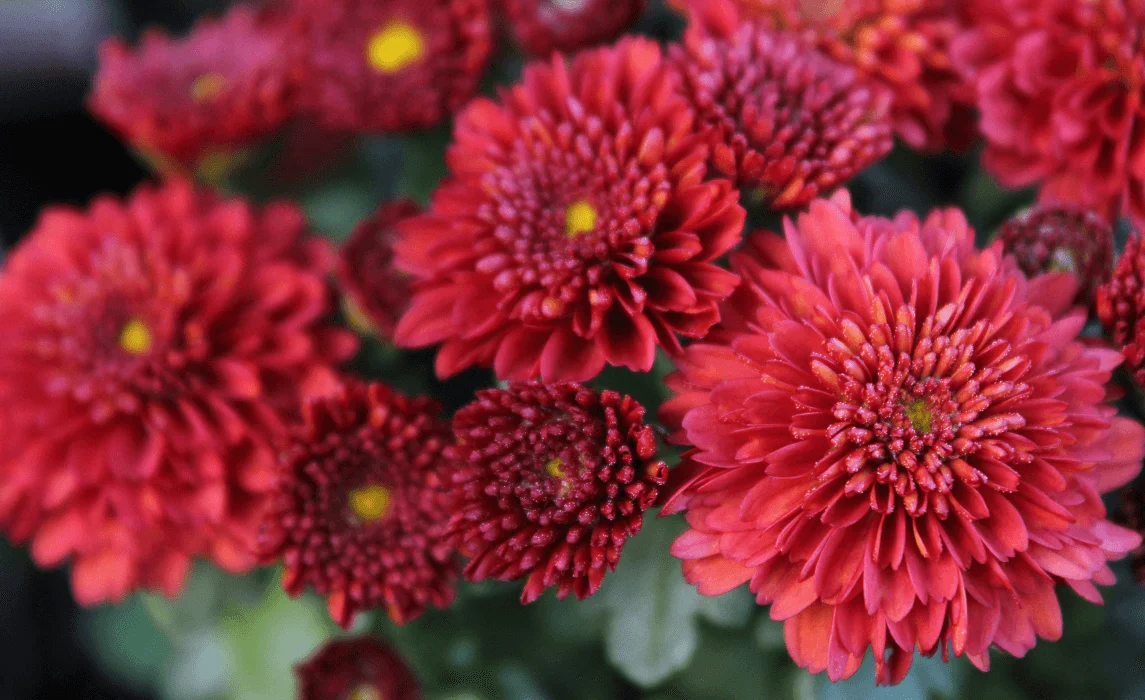
Chrysanthemums are revered in many cultures as symbols of longevity, joy, and good fortune. In Feng Shui, they represent happiness and a life of ease, making them excellent plants for brightening homes and workspaces. With their wide variety of vibrant blooms—ranging from yellow and red to pink and white—they bring color, energy, and positivity to any environment. Chrysanthemums thrive outdoors in sunny gardens but can also be grown in containers indoors near bright windows. They prefer well-draining soil and consistent moisture, though overwatering should be avoided. Deadheading spent flowers encourages longer blooming periods. These cheerful plants are recommended for gardeners who love ornamental flowers and want to cultivate a lively, luck-filled space. Chrysanthemums are especially popular as seasonal decorations, adding beauty and symbolic prosperity wherever they grow.
Soil: Well-draining garden soil
Water: Keep soil moist; avoid soggy roots
Light: Full sun
Humidity: Average outdoor levels
Fertilizer: Every 2 weeks in growing season
Temperature: 60–70°F (15–21°C)
USDA Zone: 5–9
10. Bamboo Palm (Chamaedorea seifrizii)
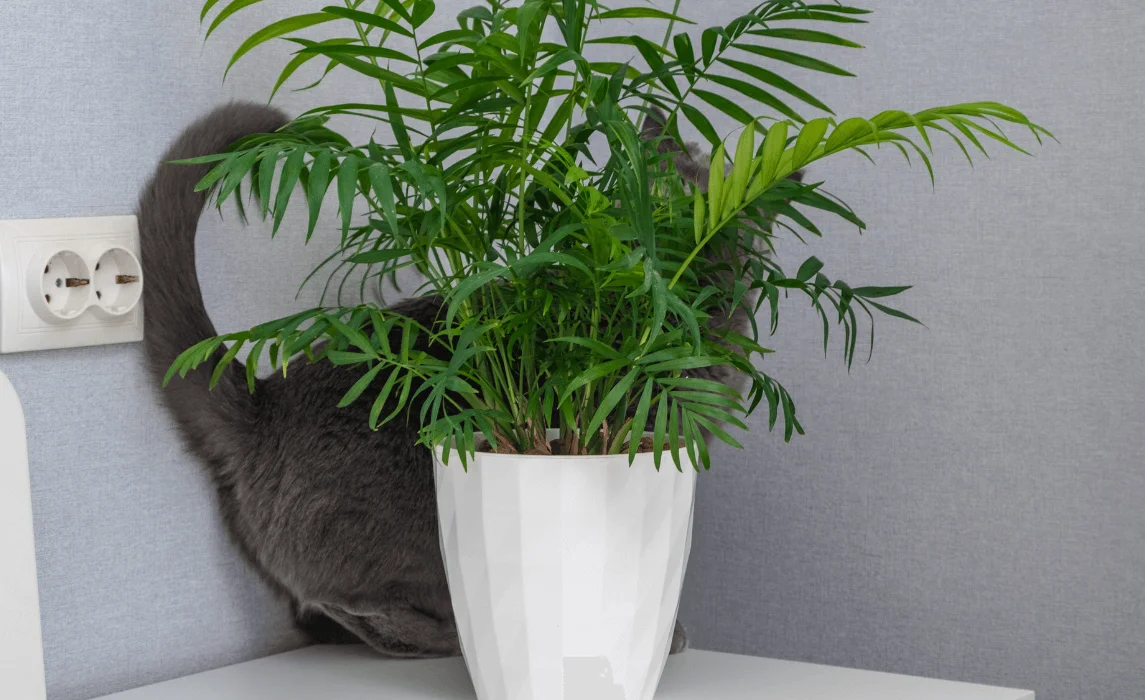
The Bamboo Palm is a lush indoor plant associated with good fortune, peace, and positive energy flow. Its elegant, feathery fronds resemble bamboo, giving it a graceful appearance that complements interiors beautifully. Symbolically, it is believed to attract wealth and improve the flow of chi in homes and offices. Growing up to seven feet tall indoors, it thrives in bright but indirect light, though it also tolerates lower light conditions. This palm prefers slightly moist soil and higher humidity, making it an excellent choice for bathrooms or humid rooms. Fertilizing every two months during the growing season ensures healthy growth. With its easygoing nature, the Bamboo Palm is ideal for beginner to intermediate gardeners who want an attractive, air-purifying plant that also brings luck and tranquility into their space.
Soil: Well-draining, peat-based mix
Water: Keep soil lightly moist
Light: Bright, indirect light
Humidity: Moderate to high
Fertilizer: Every 2 months in growing season
Temperature: 65–80°F (18–27°C)
USDA Zone: 10–11
Frequently Asked Questions:
1. What makes a plant a “good luck” plant?
A good luck plant is any house plant believed to bring good fortune, prosperity, or protection. In many traditions, plants are known to bring balance and positive energy into spaces, with certain species like the Money Tree plant, Chinese Money Plant, or Lucky Bamboo plant considered symbols of good luck. Feng Shui practitioners often recommend these plants to attract money, love, and good fortune, especially when they are placed in the home or office in specific directions.
2. Which plants are best to attract money and prosperity?
Popular plants to attract money include the Money Tree plant, Chinese Money Plant, Jade Plant, and Pothos plants. These are often referred to as Feng Shui plants to attract wealth and good luck. Among the best Feng Shui plants, Lucky Bamboo (especially lucky bamboo 6 stalks), Jade, and Money Trees are known to bring prosperity and good luck.
3. Can Feng Shui really help plants bring good energy?
Yes, Feng Shui can be translated as the “way of wind and water,” and Feng Shui lucky plants are believed to bring balance and energy flow indoors. Chinese Feng Shui emphasizes placing plants in your home in areas that welcome good chi (energy). Popular plants like Lucky Bamboo, Money Tree, and Pothos plants are best used as Feng Shui indoor plants to attract wealth and good luck to your home.
4. Which good luck plant is best for home décor?
Peace Lilies, Orchids, and Bamboo Palms are excellent for home décor because they combine beauty with symbolic meaning. These plants are associated with luck and believed to bring peace, harmony, and prosperity. For a plant that symbolizes good fortune and enhances home décor, Money Trees and Chinese Money Plants are also excellent choices.
5. What’s a good plant for housewarming gifts?
Plants like Lucky Bamboo, the Money Tree plant, and Orchids are traditional housewarming gift options because they are believed to bring good luck to your home and symbolize wealth, love, and good fortune. They’re also easy-to-grow plants that add good luck and positive energy when placed in the home.



.webp)


